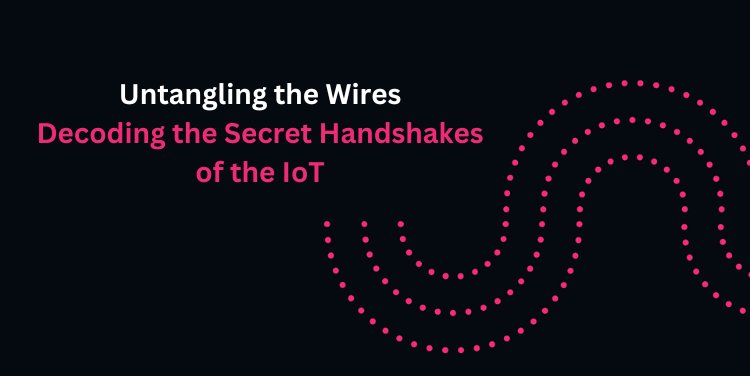Untangling the Wires: Decoding the Secret Handshakes of the IoT

The Internet of Things (IoT) has emerged as a transformative force, connecting devices, sensors, and systems to create a seamless and intelligent network. At the heart of this interconnected web are IoT protocols, which serve as the communication backbone for devices to exchange information. In this blog, we'll delve into the fascinating world of IoT protocols, exploring their types, functionalities, and the role they play in shaping the future of connected technology.
Understanding IoT Protocols:
IoT protocols are essentially a set of rules and standards that govern how devices communicate with each other within the IoT ecosystem. These protocols ensure seamless data exchange, interoperability, and efficient communication between devices. There are several key IoT protocols, each designed for specific use cases, environments, and requirements.
- MQTT (Message Queuing Telemetry Transport):
MQTT is a lightweight and efficient protocol designed for low-bandwidth, high-latency, or unreliable networks. It follows a publish-subscribe model, where devices publish messages to a central broker, and subscribers receive relevant information. This makes MQTT ideal for scenarios where minimal bandwidth usage and reliable communication are critical, such as in remote monitoring and industrial applications.
- CoAP (Constrained Application Protocol):
CoAP is tailored for resource-constrained devices, making it suitable for IoT applications where memory and processing power are limited. It operates over UDP, minimizing overhead and optimizing energy consumption. CoAP is commonly used in applications like smart cities, healthcare, and industrial automation, where lightweight communication is essential.
- HTTP (Hypertext Transfer Protocol):
While HTTP is a well-known protocol for web communication, it is also making its mark in the IoT space. With the rise of RESTful APIs, HTTP is being utilized for device-to-cloud communication in IoT applications. Its widespread adoption and compatibility with existing web infrastructure make it a convenient choice for scenarios where IoT devices need to interact with web services.
- AMQP (Advanced Message Queuing Protocol):
AMQP is a robust and versatile messaging protocol that facilitates communication between devices and applications. It supports complex messaging patterns, making it suitable for scenarios where advanced message queuing and routing are essential. AMQP is commonly used in industrial automation, smart grids, and other applications that require reliable and scalable communication.
- DDS (Data Distribution Service):
DDS is a data-centric middleware protocol designed for real-time and mission-critical IoT applications. It provides a decentralized publish-subscribe model, enabling efficient communication in large-scale systems. DDS is often employed in applications like autonomous vehicles, healthcare systems, and defense, where low latency and high reliability are paramount.
As the Internet of Things continues to expand, the importance of robust and efficient communication protocols cannot be overstated. The diverse range of IoT protocols available today caters to different needs, ensuring that devices can communicate seamlessly across various applications and environments. Whether it's the lightweight MQTT for remote monitoring or the robust AMQP for industrial automation, these protocols form the backbone of the interconnected future, shaping a world where devices collaborate intelligently to enhance efficiency, convenience, and overall user experience.
What's Your Reaction?















